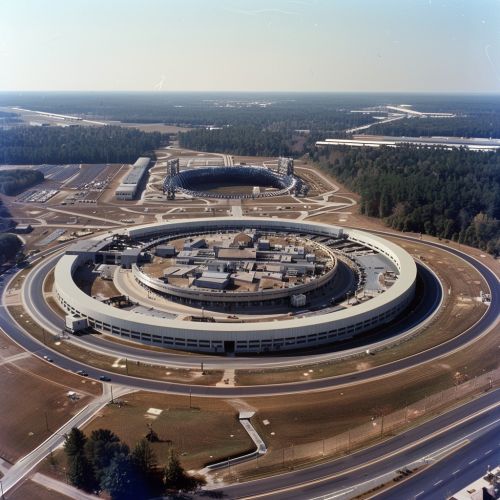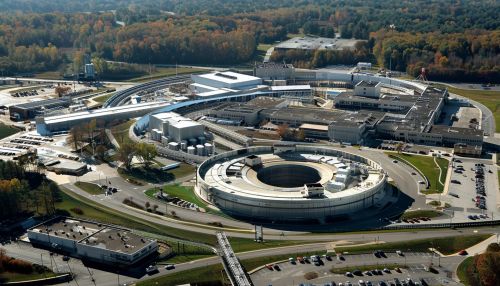Relativistic Heavy Ion Collider
Overview
The Relativistic Heavy Ion Collider (RHIC) is a particle accelerator located at Brookhaven National Laboratory (BNL) in Upton, New York. This accelerator was designed to collide ions, specifically heavy ions, at nearly light speed. The primary goal of these collisions is to investigate the properties of quark-gluon plasma, a state of matter believed to have existed just microseconds after the Big Bang.


Design and Construction
The design of the RHIC is based on two intersecting storage rings, each with a circumference of 3.8 kilometers. These rings are housed in a tunnel approximately 4.6 meters in diameter. The construction of the RHIC began in 1991 and was completed in 1999, with the first collisions occurring in 2000.
The RHIC is capable of accelerating heavy ions - atoms stripped of their electrons - to speeds close to the speed of light. The ions are guided by a series of magnets along the accelerator ring, where they are then made to collide at four intersection points. These collisions create temperatures 100,000 times hotter than the center of the sun, replicating conditions that existed in the universe a microsecond after the Big Bang.
Operation
The operation of the RHIC involves a complex series of steps. First, ions are produced in an ion source, where they are stripped of their electrons and become positively charged. These ions are then injected into a pre-accelerator, where they are further accelerated before being injected into one of the two main accelerator rings.
Once in the main ring, the ions are accelerated to nearly the speed of light. This is achieved through the use of superconducting magnets, which guide the ions along the ring and increase their speed with each pass. When the ions reach the desired speed, they are steered into a collision course with ions traveling in the opposite direction.
The collisions occur at four main intersection points, each of which is monitored by a different experiment. These experiments are designed to measure various aspects of the collisions and the resulting quark-gluon plasma.
Experiments
There are four main experiments stationed at the RHIC: PHENIX, STAR, PHOBOS, and BRAHMS. Each of these experiments is designed to detect and measure different aspects of the collisions and the resulting quark-gluon plasma.
PHENIX (Pioneering High Energy Nuclear Interaction eXperiment) is designed to detect a wide range of particles produced in the collisions, with a particular focus on those that are rare or hard to detect.
STAR (Solenoidal Tracker At RHIC) is designed to track the thousands of particles produced in each collision, providing a comprehensive picture of the events.
PHOBOS (named after one of the moons of Mars) is designed to measure the global properties of the collisions, such as the total number of particles produced.
BRAHMS (Broad Range Hadron Magnetic Spectrometers) is designed to measure the momentum and charge of charged particles produced in the collisions.
Achievements
Since its first collisions in 2000, the RHIC has made several significant discoveries in the field of high-energy physics. In 2005, it was announced that the RHIC had created a quark-gluon plasma, confirming the existence of this state of matter.
In 2010, it was announced that the RHIC had observed the "perfect" liquid, a state of matter with extremely low viscosity, or resistance to flow. This discovery has led to a better understanding of the strong force, one of the four fundamental forces of nature.
In 2014, the RHIC became the first accelerator to collide polarized protons, a feat that allows scientists to explore the spin structure of the proton in more detail.
Future
The future of the RHIC is currently focused on upgrades to increase the luminosity and collision rate of the accelerator. These upgrades, known as the RHIC II project, are expected to significantly enhance the RHIC's capabilities and allow for more detailed studies of the quark-gluon plasma.
In addition, there are plans to use the RHIC to explore other areas of physics, such as the properties of the Higgs boson and the nature of dark matter.
